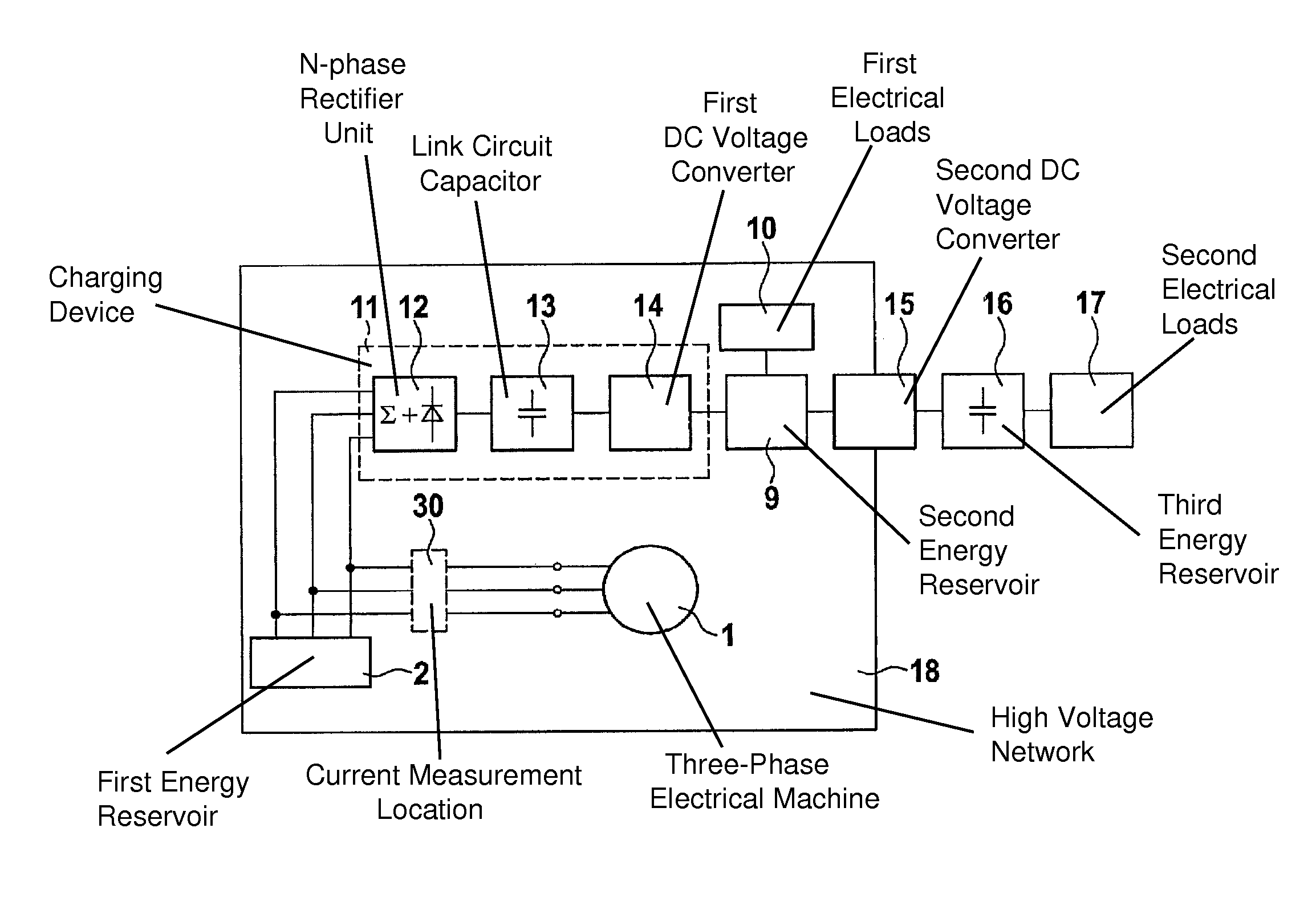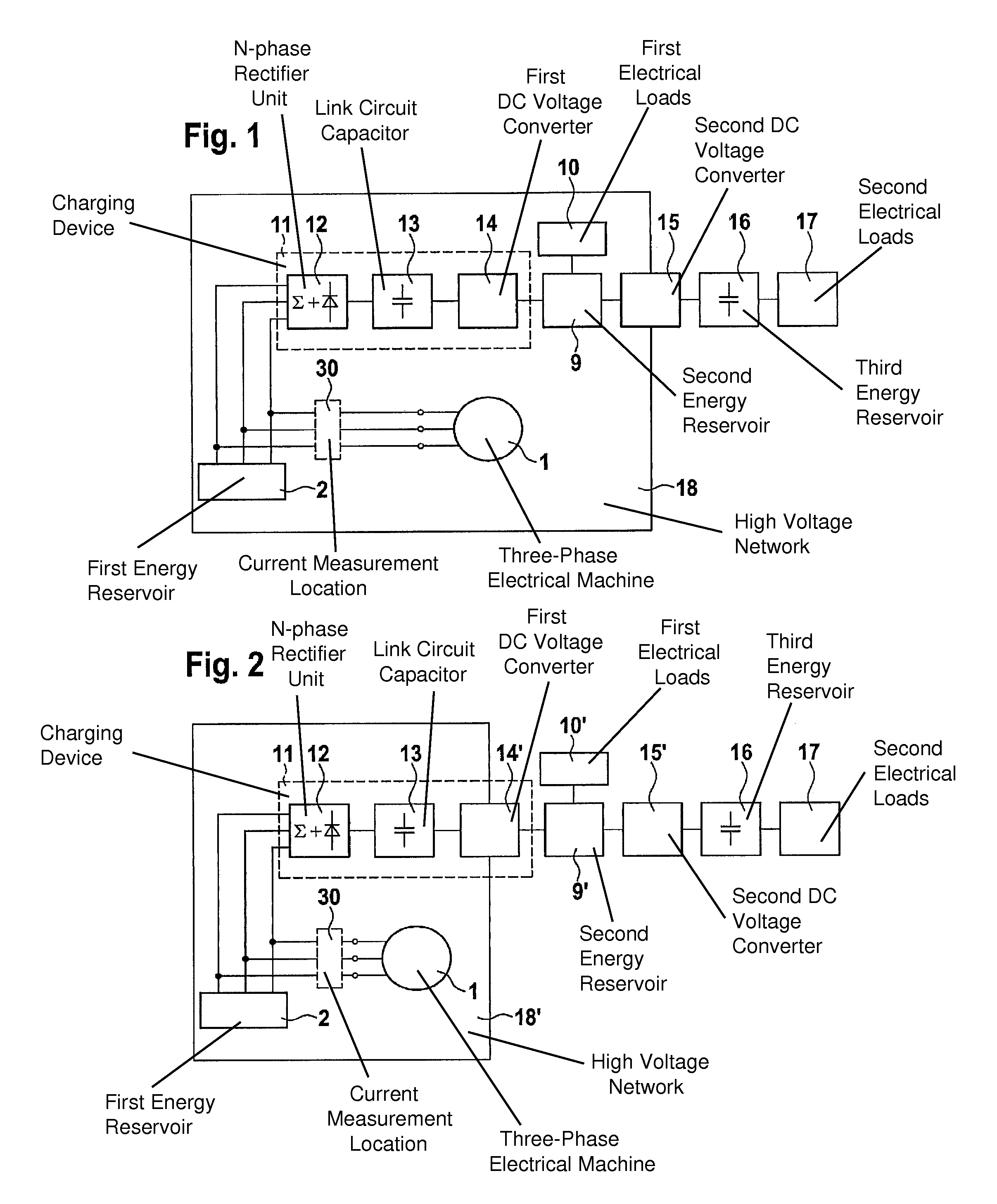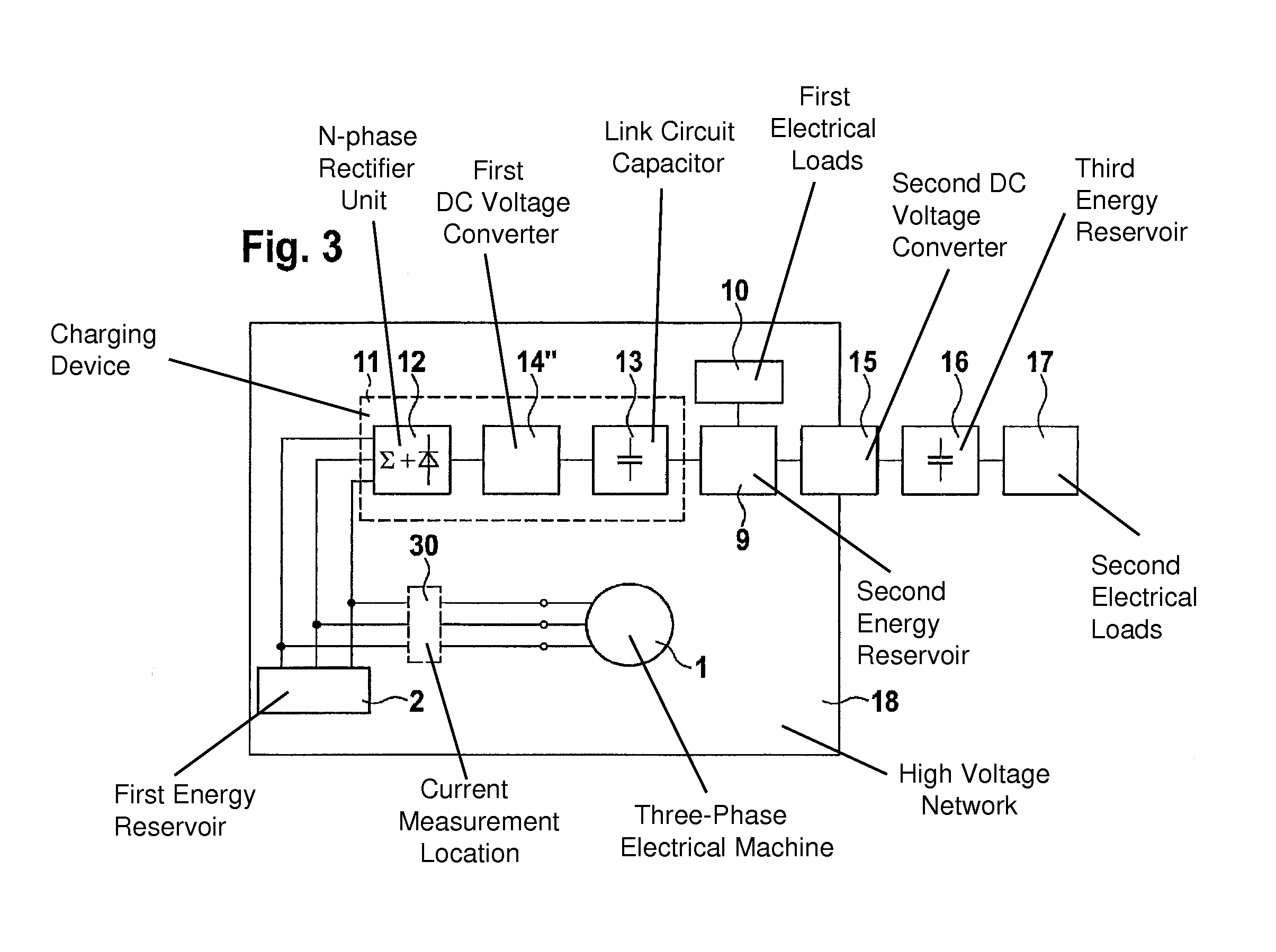System for charging an energy store, and method for operating the charging system
a technology for charging energy and energy storage, applied in the direction of parallel/serial switching, battery/fuel cell control arrangement, transportation and packaging, etc., can solve the problem of not having dc voltage available for supplying energy directly to electrical loads
- Summary
- Abstract
- Description
- Claims
- Application Information
AI Technical Summary
Benefits of technology
Problems solved by technology
Method used
Image
Examples
Embodiment Construction
[0032]FIG. 1 is a schematic block diagram of a first embodiment of an energy supply network according to the present invention. A controllable energy reservoir 2 is connected to a three-phase electrical machine 1. Controllable energy reservoir 2 encompasses three energy supply branches 3-1, 3-2, and 3-3, which are connected on the one hand to a low reference potential T- (reference bus) and on the other hand respectively to individual phases U, V, W of electrical machine 1 (see FIGS. 4, 5, 6, 7). Each of energy supply branches 3-1, 3-2, and 3-3 has, connected in series, m energy reservoir modules 4-11 to 4-1m, 4-21 to 4-2m, and 4-31 to 4-3m respectively, where m≧2. Energy reservoir modules 4 in turn each encompass multiple electrical energy reservoir cells connected in series which, for reasons of clarity, are labeled in FIGS. 4 to 7 only in energy supply branch 3-3 connected to phase W of electrical machine 1, with reference characters 5-31 to 5-3m. Energy reservoir modules 4 furth...
PUM
 Login to View More
Login to View More Abstract
Description
Claims
Application Information
 Login to View More
Login to View More - R&D
- Intellectual Property
- Life Sciences
- Materials
- Tech Scout
- Unparalleled Data Quality
- Higher Quality Content
- 60% Fewer Hallucinations
Browse by: Latest US Patents, China's latest patents, Technical Efficacy Thesaurus, Application Domain, Technology Topic, Popular Technical Reports.
© 2025 PatSnap. All rights reserved.Legal|Privacy policy|Modern Slavery Act Transparency Statement|Sitemap|About US| Contact US: help@patsnap.com



